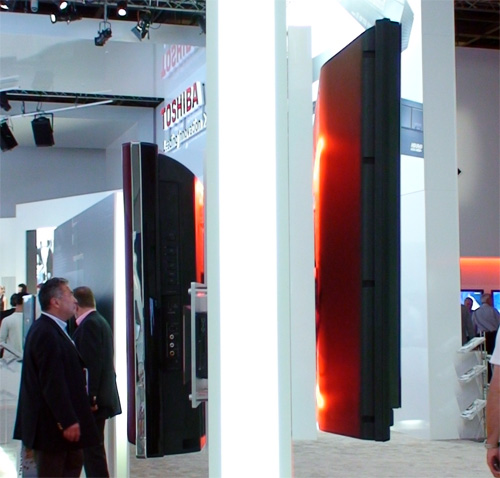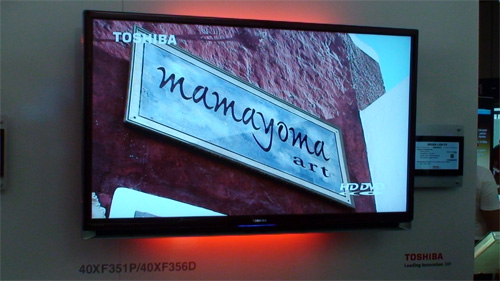On paper, the specifications for the new Toshiba 42Z3030D LCD TV impressed me the most. It will sport an SPVA panel, so we can expect better blacks and wider viewing angle than the Toshiba 42X3030D and 42C3030D (which chiefly use LG-Philips S-IPS panels). While I can’t comment on the black level, even under suboptimal review circumstances (excessive ambient lighting; no calibration) I thought that the Toshiba 42Z3030D exhibited less drop-off in blacks and colour saturation when viewed off-axis.

<!-- google_ad_client = 'pub-2887677957235196'; google_ad_slot = '4990177225'; google_ad_width = 336; google_ad_height = 280; //-->
Furthermore, Toshiba is going to implement 5:5 pulldown (so that 24p based high-definition films can be refreshed at 120Hz) on the 42Z3030D. If they manage to pull this off to remove telecine judder without introducing other artifacts, and include the same excellent CMS (colour management system) and video processing that are found on their existing models, then they could have a winner on their hands… can’t wait to review one.
Another new Toshiba LCD TV that I came across was the 40XF356D of the “Picture Frame” XF range blessed with an ultra-thin 23mm bezel. Having seen Sharp’s super-slim LCD prototype earlier, I thought the description referred to the depth of the television, so imagine my initial disappointment:
 |
| Left: Toshiba 40XF356D; Right: Toshiba 42X3030D |
It was actually the width of the bezel that measured 23mm, which – much to my delight – instantly bestowed an übercool air of minimalism onto the Toshiba 40XF356D when viewed from the front:

If you’re wondering about the red glow behind these Toshiba televisions, no they haven’t started developing their own pseudo-Ambilight technology. It’s probably just a showroom stunt; I sure hope it’s not intended as bias lighting because 6500k should be the aim.
Existing models like the LF65 and the LY95 LCDs, and the PB65 plasma were on parade in the LG booth, alongside some new products like 42LY99 which will feature 100Hz technology. But what surprised me most was their curious decision to develop better 60p processing. I hope they haven’t lost the plot, but with 24p-derived high-definition films on course to become more widespread (after all the dominant theme of IFA 2007 was HD DVD/ Blu-ray), I would’ve thought that it’d make more sense to dedicate their resources into judderless 24p full frame conversion. Then again, maybe they know something I don’t.

More to come from Sony, Panasonic, Pioneer, Samsung, etc.
<!-- google_ad_client = 'pub-2887677957235196'; google_ad_slot = '0693194791'; google_ad_width = 336; google_ad_height = 280; //-->